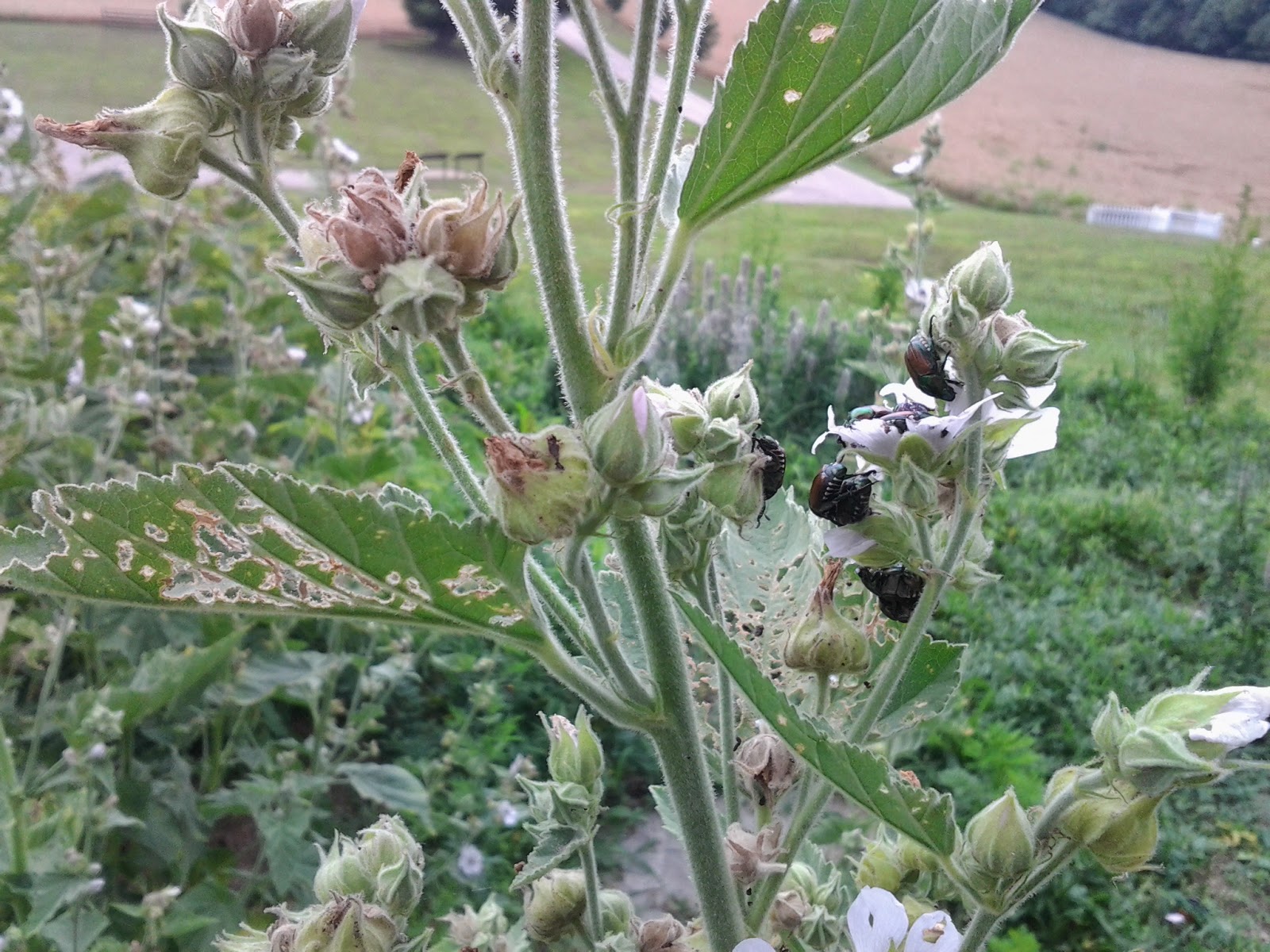The common marshmallow, Althaea officinalis, is native to North Africa, but has been used by many cultures for millennia, including the ancient Romans, Greeks, and Egyptians, all of whom ate the roots for food. The extract, sap, and pith of the plant have also been used in confections since ancient times.
Today's fluffy white marshmallows that we roast over the campfire do not contain any part of the Althaea officinalis plant, but earlier versions of marshmallow candy did. Sap extracted from the roots was whipped with sugar to create a spongy, chewy treat. Eventually, egg whites and/or gelatin mixed with starches replaced the labor-intensive and expensive process of extracting marshmallow sap, but the name remains.
Marshmallow plants were used as a medicine long before they were a dessert. In fact, their medicinal origins are likely connected to their confectionary use. The plant's extract seems to have a healing effect when applied to irritations and inflammations, especially in mucous membranes. It can form a thick gel that helps coat the throat, esophagus, stomach, etc. It has traditionally been a remedy for sore throat, cough, and the painful irritations of asthma, bronchitis, and other respiratory ailments. When sap or other extracts from the plant were mixed with honey to sooth sore throats it created a crude early form of marshmallow confection.
 |
| Marshmallow Root |
Still in use today
In the Civil War Era, marshmallow was mainly taken internally as a tisane. The roots were dried and chopped, then boiled in water. It was used for all of the above purposes, but mostly commonly to sooth sore throats and the irritations of respiratory diseases.
 |
| www.coffeeandtea.com |
While the plants in the garden are flourishing this year, they are coming under heavy attack by hundreds of Japanese beetles. This is a problem I have not had before in the garden, even though several of the other plants, like hops, are supposed to be a magnet for the pests. Still, they really seem to like the marshmallow.
The Japanese beetle was accidentally introduced to America just over a hundred years ago. Since then, they have been a major pest to agriculture and flower gardens alike. I remember the awful nuisance they made on my father's roses every year when I was growing up.
Despite how many beetles are using the mallows as a breeding ground, they don't seem to be doing any major damage and the plant is taking it in stride. I decided not to try and do anything about the little invaders, as it would be a lot of work or might have unintended consequences, and the plants don't seem to be suffering too much. They are unsightly though, and I hope they might possibly be fewer in number next year.
















_2.JPG)








